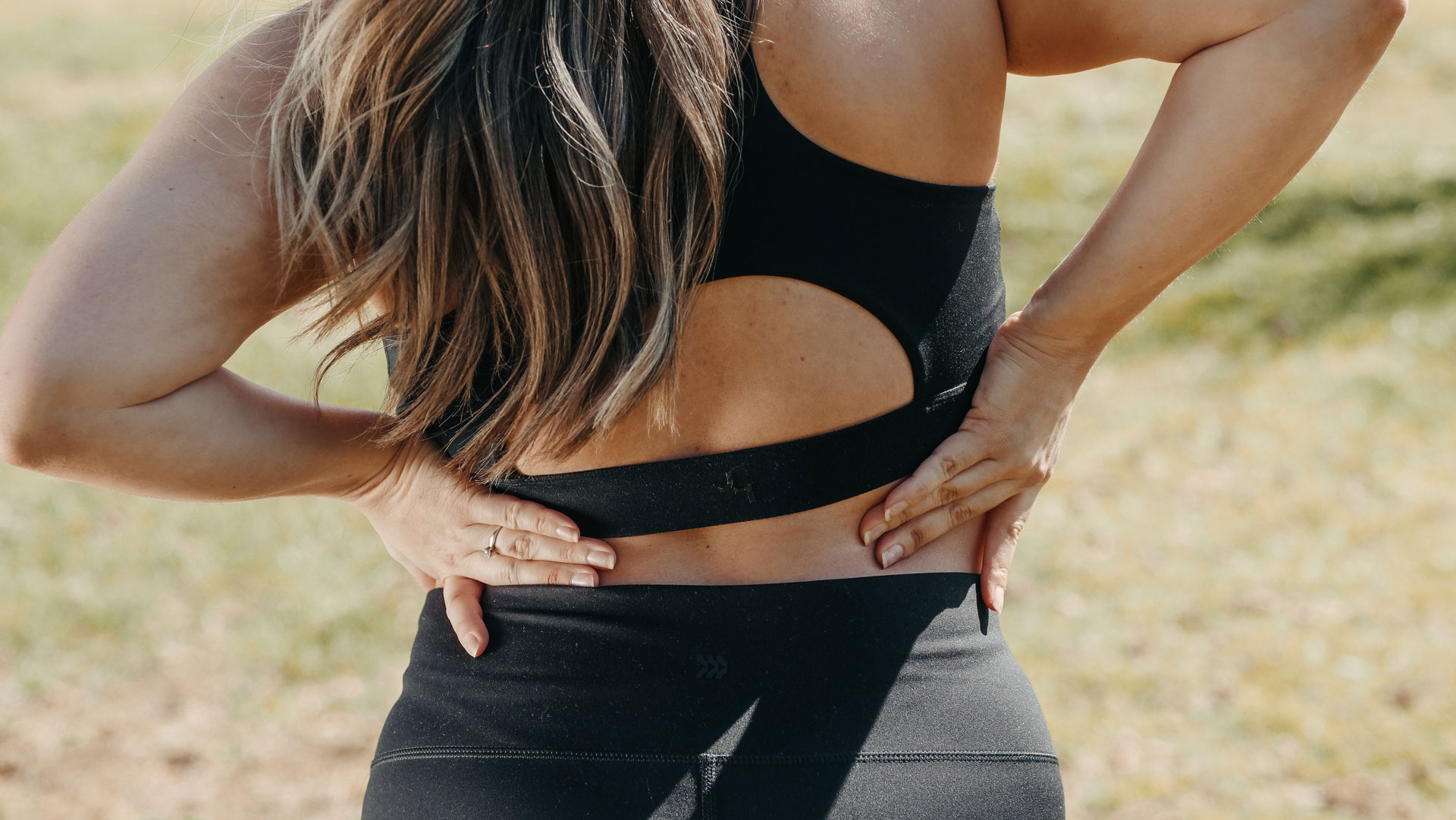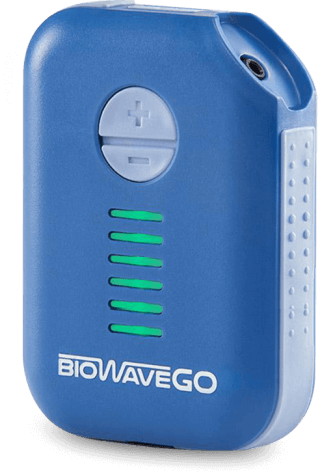It’s a feeling many of us are all too familiar with – lower back pain after a workout.
The problem? Not only can pain put a halt to your exercise regime, lower back pain can be a concerning signal that something isn’t quite right.
A great workout is often accompanied by aches and pains. Pain is often a completely normal side effect of the stress that you place on your muscles after a period of exercise, whether at the gym, while training or after competing.
But when is pain normal, and when is lower back pain after a workout an indication of an injury?
Why does my lower back hurt after exercising?
When it comes to strength training, pain comes with the territory.
As you use your muscles, you place force on them which puts them under strain. With each repetition, your muscle fibres are effectively being damaged on a microscopic level.
These ‘microtears’ are the result of your muscles continuously stretching and flexing during a period of rigorous exercise.
Your muscles heal from this damage quickly, with thicker, stronger fibres taking the place of damaged, weaker ones. This is what helps you build muscle mass.
Delayed onset muscle soreness (DOMS) is the term used to describe the pain and discomfort associated with this natural damage-repair cycle¹. A little soreness might mean you’re making great progress towards your workout goals.
When is it okay to feel lower back pain after a workout?
The muscle groups in your lower back enable flexing, bending forward, arching and lifting – key components in a number of exercises designed to increase core strength and flexibility.
Making sure to stretch and warm up properly before your workout is important to make sure your muscles are well prepared.
Lateral pull-downs, cable rows and even standard pull-ups place load on the Latissimus dorsi – the middle back. Any exercise that causes the muscles to quickly go from bent to straight (called eccentric contraction) is likely to result in a little soreness as DOMS kicks in.
The lower back, or Thoracolumbar fascia, is similarly affected by exercises like barbell lifts, kettlebell swings and squats.
DOMS is even more likely in those who are just embarking their exercise journey, or returning after a longer period of rest or inactivity. Muscles that are unused to the strain placed on them by a good workout are particularly susceptible to microtears and inflammation.
When is lower back pain after a workout a concern?
Are you experiencing muscle soreness after exercise? This is a common condition known as Delayed Onset Muscle Soreness (DOMS) which typically occurs 8 hours after a workout and can last up to 72 hours. This type of muscle pain is usually mild to moderate and can be resolved with gentle movement. However, if you’re experiencing severe pain that prevents you from carrying out daily tasks, it may be a sign of a muscle strain.
A muscle strain occurs when a muscle is injured or torn and can cause pain, stiffness and weakness. If you have a lower back muscle strain, it may also result in difficulty walking, bending or standing.
Discover BioWaveGO
Start taking control of your post-workout pain. Discover BioWaveGO’s effective pain blocking technology that can help you recover faster and meet your training goals.
Acute muscle pain, or pain that occurs during exercise, can be a signal that your muscles are under too much strain.
Improper form, poor posture or resuming exercise too soon after a previous injury can cause acute muscle pain to occur and is your body’s way of telling you to stop what you’re doing.
Very severe lower back pain, or lower back pain that does not resolve within 72 hours, may be a symptom of a more serious injury or illness. As always, if you have concerns your best course of action is to consult a G.P or Physiotherapist.
Lower back pain from pull ups
Pull ups work a huge range of muscles. While the upper-body nature of this workout might make you think lower back pain from pull ups is not common, pull ups also work out your core and your lats, or mid back.
Many of the other muscles involved in a pull-up are connected to your mid and lower back. If they’re tight, this might manifest as lower back pain from pull ups.
Lower back pain from pull ups can be reduced by stretching and doing some mobility work to warm up first.
Foam rolling your lower back and the surrounding muscles may help improve blood and lymphatic flow to the area, boosting your flexibility and mobility.
If you continue to experience lower back pain from pull ups then your posture or technique might be contributing to your discomfort. Be sure to continue with very gentle movement and rest and consult a Physiotherapist or personal trainer if lower back pain continues to affect your exercise.
Lower back pain from rowing machines
Rowing is one of those exercises where eccentric contraction really comes into play. While this flexion-extension action is perfect for building up strength, lower back pain from rowing machines is a common side effect of the stresses placed on the muscles during this exercise.
Your form is key when it comes to avoiding lower back pain from rowing machines. Avoid hunching your back, which causes your lower back to slump. Sitting up straight means you’re flexing your muscles from a well-supported position.
As always, don’t overdo it. Overtraining is a common cause of muscle pain, especially when first starting out.
Back pain from boxing
Your back muscles play a key role in boxing, especially when it comes to those repetitious movements during training.
Back pain from boxing can occur for a number of reasons, such as impact injuries. But more commonly pain occurs from the torqueing and twisting action of the waist and hips when punching.
Missed punches, or throwing too hard can also lead to injury.
Core strength training should be a key part of your exercise regime if you want to avoid back pain from boxing. Planks and side planks can help strengthen abdominal and back muscles.
Improving your technique may be key if you experience back pain from boxing. Hunching or leaning on your front feet are key drives of lower back pain. Covering the basics like standing and moving correctly can go a long way to addressing the causes of lower back pain from boxing.
How do I get rid of lower back pain after working out?
Lower back after a workout that results from the natural tearing and healing of muscles can be a sign of a job well done when it comes to exercise.
Keeping yourself moving is key to staying flexible and aiding recovery.
Feeling sore and stiff might tempt you to try and keep yourself rigid and limit your mobility, but keeping yourself moving and performing gentle stretches and exercises will help keep you flexible and can help relieve pain.
Delayed onset muscle soreness (DOMS) kicks in around 8 hours after a workout and can last up to 72 hours. While this pain is benign, it can interfere with daily activities and be distracting – especially if you are continuing to train.
That’s why the effective pain relief provided by BioWaveGO is trusted by professional athletes from across the sporting world, to help get them moving and training faster, without the pain.
BioWaveGO is a portable, 100% drug-free, electronic pain relief device that’s clinically proven to reduce the symptoms of pain. BioWave’s effective technology uses high-frequency electrical signals to block pain at the nerve. Our device treats pain, enables motion and aids rehabilitation and recovery.
Teams throughout the UK including Rangers F.C., Manchester City, Leeds United and others use BioWaveGO as support for physios treating players, getting them off the table and back into training and playing.
In multiple clinical studies, over 84% of patients reported a significant reduction in pain from just one 30-minute treatment, which has also been proven to decrease stiffness, increase motion, and reduce muscle spasm.
BioWaveGO – Your Workout Companion
Used by professional athletes, BioWaveGO supports you in your fitness goals, helping you recover faster with revolutionary pain-blocking technology. Make BioWaveGO your workout companion – try it for 30 days and discover life without pain.
Clinically proven results
In multiple clinical studies, over 84% of patients* report a significant reduction in pain from just one 30-minute treatment, with up to 24 hours of pain relief for chronic lower back pain.
How to reduce post workout pain
While some muscle soreness is normal post-workout, building up core strength and endurance helps you exercise for longer and lessens the impact of post-workout pain.
Being sure to do full warm-ups and warm-downs for your exercise might help prevent a particularly bad bout of muscle soreness². Post-workout warm-downs and stretches help cool things down and return your muscle fibres to their normal length.
BioWaveGO is the workout companion of sporting professionals and athletes, helping them take control of their post-workout pain and stick to their training schedules.
Sources
-
- Proske U, Morgan DL. Muscle damage from eccentric exercise: mechanism, mechanical signs, adaptation and clinical applications. J Physiol. 2001 Dec 1;537(Pt 2):333-45. doi: 10.1111/j.1469-7793.2001.00333.x. PMID: 11731568; PMCID: PMC2278966.
- Olsen O, Sjøhaug M, van Beekvelt M, Mork PJ. The effect of warm-up and cool-down exercise on delayed onset muscle soreness in the quadriceps muscle: a randomized controlled trial. J Hum Kinet. 2012 Dec;35:59-68. doi: 10.2478/v10078-012-0079-4. Epub 2012 Dec 30. PMID: 23486850; PMCID: PMC3588693.
- Hegarty DA, Bretherton B. An Open-Label Pilot Study Investigating Noninvasive High-Frequency Peripheral Nerve Fiber Stimulation in Chronic Pain. Pain Pract. 2021 Jun;21(5):578-587. doi: 10.1111/papr.12993. Epub 2021 Jan 27. PMID: 33369130.

